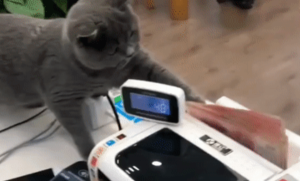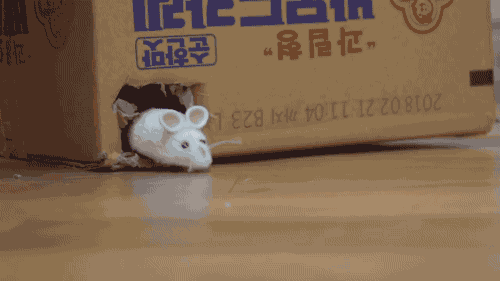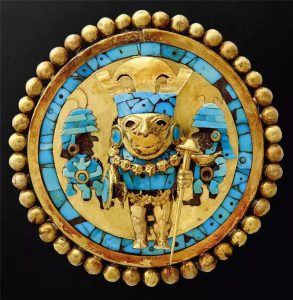Does Your Kitten Know How to Count?If your kitten sneaks one of your canned foods and gives it to the orange cat downstairs, will you be able to catch them?Yesterday, you gave them five freeze-dried treats, but today, you only gave two — will your kitten get upset?What if you feel like you’ve given too much cat food, so you secretly pour some back into the bag — will your kitten feel like they’ve been cheated?To uncover the answers to these everyday mysteries, we first need to solve this question:Can kittens really count?
-
Can Kittens Tell the Difference Between 1, 2, and 3?
Researchers invited 26 adult hybrid cats to participate in an experiment. In the end, only 22 cats went through with it. To avoid stressing the cats, the experiment was conducted in their familiar homes.The experiment began: the researchers placed two cardboard panels 2 meters away from the cats. Each panel had a different number of food balls on it. The kittens were gently carried into the room by their owners, while the researchers called the cats’ names and softly tapped the cardboard boxes. Once the cats’ curiosity was piqued, the researchers removed the opaque covers from both sides of the cardboard panels and allowed the cats to approach freely. If the cat sniffed, pawed, or ate the food on one side, it was considered to have “chosen” that side.The researchers repeated the experiment several times, and prior studies on dogs and coyotes suggested that, in addition to quantity, factors like ratios could influence the animals’ choices. For example, ratios like 1:2 or 2:4 are both 0.5, while 1:4 (0.25) is smaller than 3:4 (0.75).In this case, the researchers tested 8 different numerical combinations. The result? Of the 22 cats, 17 (77.3%) consistently chose the side with the greater number of food balls (more times than the side with fewer).The researchers found that when the ratio of food on the two sides was less than 0.5 (such as 1:4, 1:3, or 2:5), the kittens were more reliable and accurate at choosing the side with more food. In other words, the experiment showed that kittens can count — especially when there is a larger difference in quantity.This outcome is likely tied to the cats’ hunting instincts. Cats have experienced the “roughness of nature,” and before attacking prey, they instinctively calculate the return on investment — just like any savvy hunter!

-
Choose One Mouse or Three Mice?
Three years after the first experiment, in 2019, the researchers upgraded the experiment to test kittens’ ability to count in a more realistic scenario. Instead of food balls, they used live mice — placing 1 mouse on one side and 3 mice on the other. The experiment involved 24 cats, and this time, the researchers observed several factors:The time it took for the cat to approach the mouse cage.How long the cat lingered near the cage.The extent and duration of tail wagging when looking at the mice.The experiment was conducted in the cats’ homes to ensure they felt comfortable, and the mice were all raised by the researchers.Results? As expected, some kittens didn’t cooperate — a long-standing tradition in cat research. Of the 24 cats, 5 refused to participate, so the data was analyzed from 19 cats.The results showed that 10 of the 19 cats were more eager to approach the cage with 3 mice than the cage with just 1 mouse. Five cats showed no preference, and 4 cats were more eager to approach the cage with just 1 mouse. While the differences seemed notable, statistical analysis showed no significant difference in the initial response.However, the next result was very significant: 14 of the 19 cats spent more time near the cage with 3 mice, sniffing and exploring it more thoroughly. The statistical significance of this result was extremely strong (P < 0.004).The researchers concluded that this shows cats can spontaneously and quickly assess numbers in real-life situations. Cats are natural-born hunters, and their brains can quickly calculate the best “investment” when faced with different prey options.
-
A Clever Kitten — Will They Learn to Count?
Though I’ve labeled this as Experiment 3, it actually took place before the previous two experiments in 2009. In the first experiment (2016), we discovered that cats are more sensitive and accurate at differentiating numbers when the difference is larger. But back in 2009, researchers had already conducted an experiment where they trained cats to distinguish between 2 and 3 small dots.In this earlier experiment, the researchers successfully taught 4 kittens to distinguish between 2 and 3 dots, with a success rate of over 70%.
“Can Cats Count?”This seemingly simple question finally has an answer, thanks to ten years of research by scientists.The fluffy little “fool” we think we have at home actually has a certain level of mathematical ability.Even if they can’t count perfectly yet, kittens can learn to differentiate quantities. So, when you think you’re tricking your kitten by taking their food or sneaking a can away, guess what?They understand exactly what’s going on — and they might even hold a grudge!





